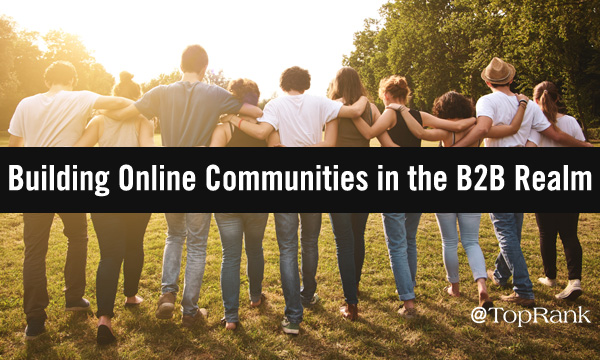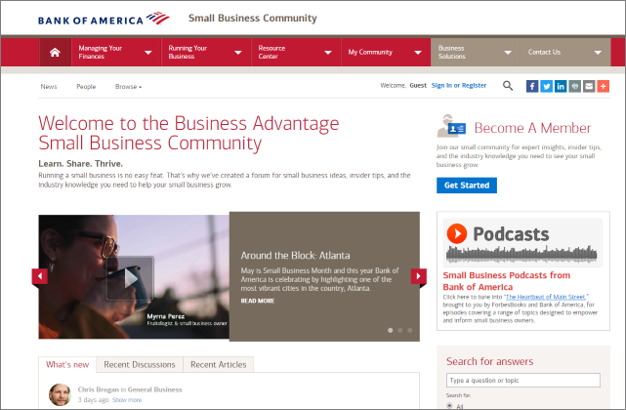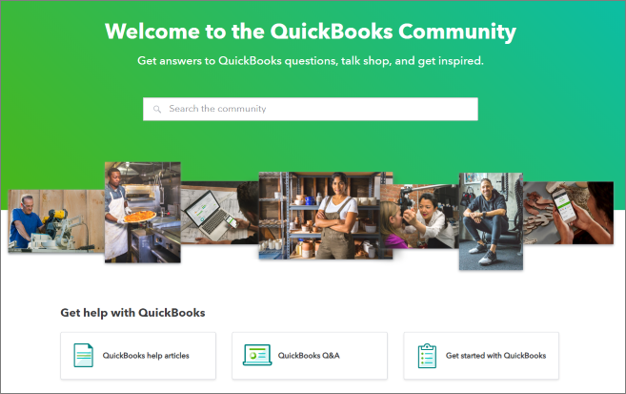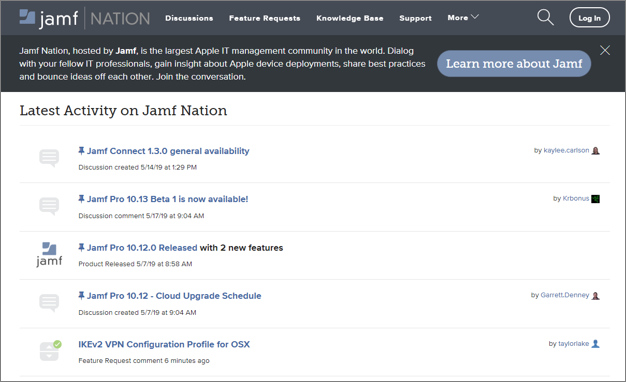
 What does effective marketing engagement look like? In the common model we see today, it’s something like this: Brands push out relevant messaging, hoping to compel a response or interaction that leads to a conversation (and maybe ultimately a conversion). This can be anything from a comment on a social media post to a chat window initiation. Nothing wrong with that. These back-and-forths between brands and individuals are important ingredients toward building trust and loyalty. The problem is that, as a sole method for driving engagement, the cast-and-wait approach is too dependent on explicit triggers to spark these interactions. Devising and creating content that drives targeted engagement is hard work. It’s worthwhile, but hard, and sometimes even well conceived plans miss the mark. What if you were able to develop a self-driven engagement engine, which fostered strategic conversations built awareness among your most valuable customers and prospects? Enter: Communities.
What does effective marketing engagement look like? In the common model we see today, it’s something like this: Brands push out relevant messaging, hoping to compel a response or interaction that leads to a conversation (and maybe ultimately a conversion). This can be anything from a comment on a social media post to a chat window initiation. Nothing wrong with that. These back-and-forths between brands and individuals are important ingredients toward building trust and loyalty. The problem is that, as a sole method for driving engagement, the cast-and-wait approach is too dependent on explicit triggers to spark these interactions. Devising and creating content that drives targeted engagement is hard work. It’s worthwhile, but hard, and sometimes even well conceived plans miss the mark. What if you were able to develop a self-driven engagement engine, which fostered strategic conversations built awareness among your most valuable customers and prospects? Enter: Communities.
Why Communities Matter to Digital Marketers
In his seminal book, Tribes: We Need You to Lead Us, Seth Godin writes about turning scattered groups of followers into a unified “tribe,” which he defines as “a group of people connected to one another, connected to a leader, and connected to an idea.” Human beings have long gravitated toward these communal experiences, elevating the collective power of their interests, beliefs, or passions. According to Godin, a group needs two things to become a tribe:- A shared idea
- A way to communicate
Coordinating Communities for B2B Marketing
It’s not uncommon for tribes to form around a B2C product or service. For example, my fiancée follows several social media groups dedicated to Oreo cookies. People in these communities share updates about new flavors, and where they can be found. Other examples of strong brand communities include Sephora, LEGO, and Starbucks. In the B2B space, this is more challenging. People aren’t generally drawn to, say, cybersecurity software in the same way they are to their favorite coffee or cosmetics brand. But that’s not to say there isn’t a deep level of passion for cybersecurity — it’s a prevalent issue throughout our society, and one that many professionals spend their entire days thinking about. The key lies in hitting the right resonant note and facilitating connections. In the case of cybersecurity specialists, we have to ask: What questions burn in their minds? Which elements of the subject excite or agitate them? Where do discussions among hardcore followers tend to center? This type of empathetic mindset should be at the core of our DNA as modern marketers. Building B2B communities doesn’t always mean trying to create a “brand community” where your company and its offerings are the primary focus; this can be tough to accomplish, and even when you do, you’re unlikely to pull in many members outside of your existing customer base. The more effective approach, from my view, is building communities around interests and commonalities that align directly with what you do. Pinpointing the ideal focal point for your community requires an acute understanding of the people you serve, derived through copious research. We can apply many of the same tactics for identifying best answer opportunities to arrive at data-driven conclusions about the most avid areas of curiosity for our audiences. If your customers are repeatedly asking the same questions to Google, they probably want to discuss them amongst one another as well.Where Can You Build Online Communities?
Let’s say you’re interested in starting a community around a certain topic relevant to your brand. Where might go about doing so? Here are some popular options:- Facebook Groups: It’s the world’s most popular social media platform and a prevalent hub for connecting around common interests. We wrote recently about the value of Facebook groups for B2B brands. And Facebook’s recently announced redesign will put groups at the center of the experience.
- LinkedIn Groups: Often a better contextual fit than Facebook for B2B social media groups, as LinkedIn is (of course) structured around professional topics. Last year LinkedIn made its Groups feature more accessible by integrating it into the mobile app.
- Forum/Message Board: The online message board traces its origins back nearly to the dawn of the internet, when it was called a bulletin board system (BBS). Today, these platforms for organized digital discourse remain prevalent and — when well populated — highly active and engaging. This post from HubSpot offers some step-by-step guidance for launching your community in such a fashion.
- Microsite: A special section of your website dedicated entirely to allowing your customers and audience members to interact with one another. It might be a message board built within your site, or a more customized setup. Whatever the case, you’ll want to make sure it’s easy to navigate and follow conversation threads.
Benefits of B2B Community-Building
“Community is important because it brings people together. Community keeps people loyal, makes them feel like they matter. It also lets the company show how much they appreciate their customers,” according to Mary Green, a community-building specialist who shared her insights with B2B News Network. Beyond the overarching loyalty imperative, here are a few other practical advantages to creating an online community:- Firsthand audience research. Marketers are always endeavoring to understand what matters most to their audiences. In many cases, this requires considerable guesswork. But by monitoring a community, you can watch conversations play out organically, seeing what impassioned followers talk about and how they talk about it. This can serve as a crucial springboard for your content planning. It might even help inspire new product features or service offerings.
- User-generated content. “Brands and influencers can make great content, but the phenomenal stuff comes from the discussion. User-generated content is gold,” says Green. I’ve written here in the past about the power of UGC for authenticity, and online communities can be an excellent resource for uncovering it.
- Finding and cultivating influencers. Within these communities, you’ll frequently see particular experts emerging with strong voices or magnetic insights. These might be candidates to incorporate more deeply into your influencer marketing strategy.
B2B Brands Running Strong Communities
Looking for inspiration? Here are a few companies that set the right example with B2B community-building:Bank of America
They major national bank created a small business online community, which they describe as “a forum for small business ideas, insider tips, and the industry knowledge you need to help your small business grow.” As you scroll through the links and discussions within, you’ll find that much of it is unrelated to banking or even financial matters, and that’s just fine. The point is that numerous customers and prospects are coming to BoA’s website to talk shop.
Intuit
The QuickBooks Community is basically a public knowledge bank where users can help each other solve problems and learn new things. There are product-centric areas for QB troubleshooting, as well as general business discussions. Intuit company reps are also active participants in the community.
Jamf
Jamf Nation describes itself as “the largest Apple IT management community in the world.” It’s a perfect example of owning a niche, and mobilizing a community while keeping product promotion on the backburner. Members are welcomed to “Dialog with your fellow IT professionals, gain insight about Apple device deployments, share best practices and bounce ideas off each other.”
Find Your Tribe
As marketing emphasis shifts more and more toward delivering holistic experiences, community-building should be a key consideration for practitioners everywhere, especially in B2B where the opportunity is especially ripe. Herein lies the next frontier of digital engagement. Want to learn more about B2B brands that are finding more authentic ways to engage? Check out our post: Flipping the B2B Marketing Script: 7 Brands That Talk to Consumers, Not CompaniesThe post The Community Imperative: Engaging in Conversations Rather Than Disseminating Information appeared first on Online Marketing Blog - TopRank®.
from Online Marketing Blog – TopRank® http://bit.ly/2WXUIqX
via IFTTT
